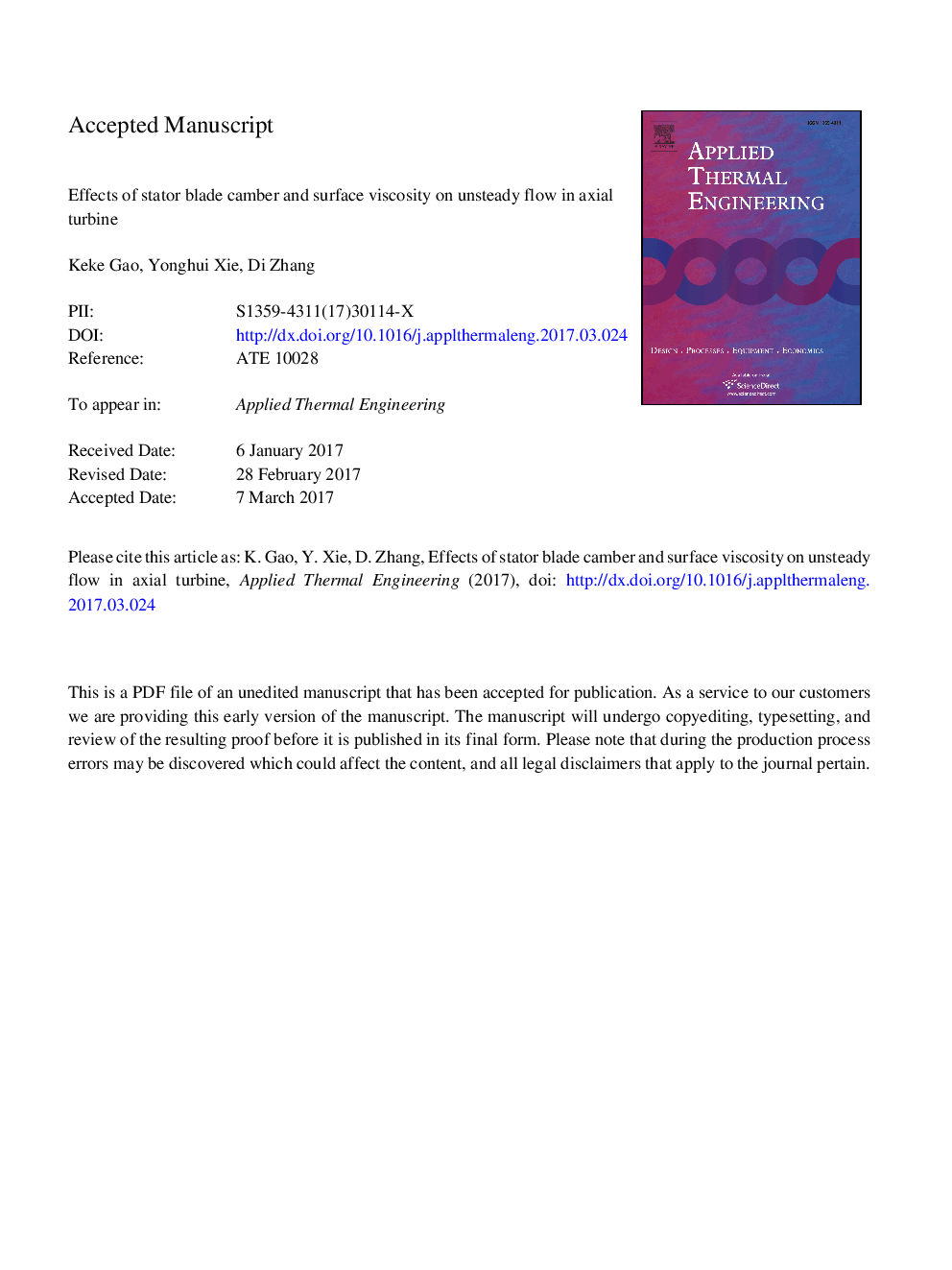| Article ID | Journal | Published Year | Pages | File Type |
|---|---|---|---|---|
| 4991405 | Applied Thermal Engineering | 2017 | 39 Pages |
Abstract
The unsteady flow in turbine is extremely complicated and the wake further strengthens the unsteadiness. The vital effects of stator blade camber and surface viscosity on unsteady flow in axial turbine are revealed, aiming to improve aerodynamic performance. Single-stage models with straight stator, negative-bowed stator and positive-bowed stator are constructed. Then, viscous model and non-viscous model on stator blade surfaces are adopted respectively. The flow phenomenon including stator wakes and passage vortex are presented in the view of space and time. Moreover, time-averaged force and pulsating force changes are analyzed through time domain and frequency domain method. The results show that efficiency of turbine with non-viscosity stator surface is higher due to the weakening wakes and positive-bowed stator can reduce the end wall losses. Notably, the stator camber can reduce the aerodynamic exciting force through the wake structure change, and the aerodynamic exciting force for the investigated low gap turbine with stator surface viscosity is relatively lower since the wake induced by viscosity improves the potential flow field uniformity. The paper provides reference for efficiency improvement and aerodynamic exciting force reduction through wake control.
Related Topics
Physical Sciences and Engineering
Chemical Engineering
Fluid Flow and Transfer Processes
Authors
Keke Gao, Yonghui Xie, Di Zhang,
